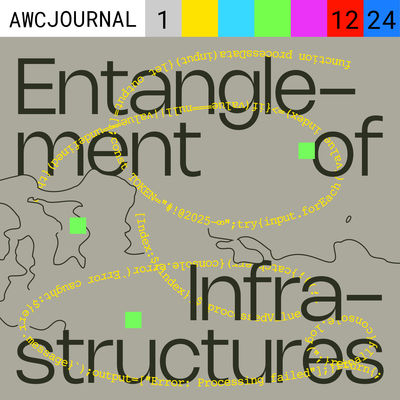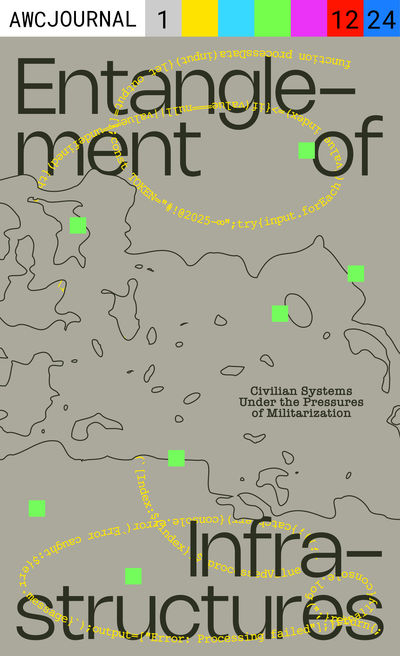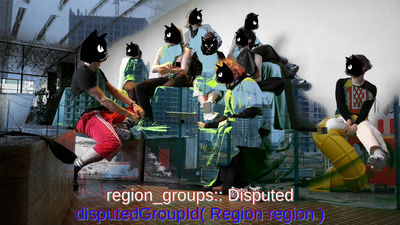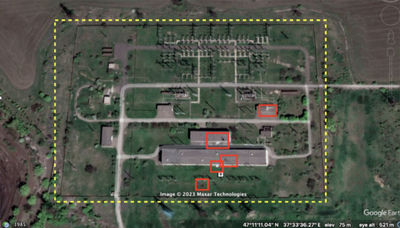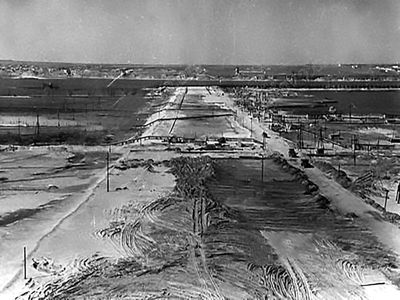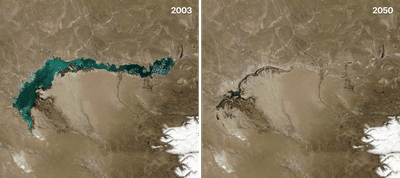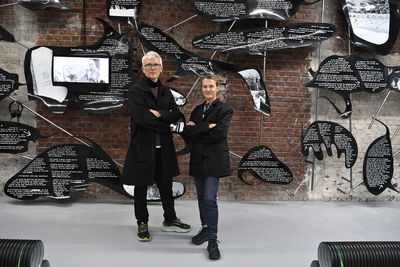
Community, Science, and Art: Mutual Support in Times of War
Text by Maryna Konieva
Photo: Shelter for Science (2022) by Oleksandr Osipov ©
War disrupts the usual order of life, forcing people to adapt, find new ways of survival, form unusual connections, and acquire new skills. In such times, the ability to respond quickly to constant changes becomes a vital necessity. Kharkiv, always a powerful center of culture and science, is now a vivid example of how people, united by shared values, find ways to support each other even under extraordinary circumstances.
Due to its proximity to the russian border, the city has become a target of relentless terror. To survive, it has been forced to transform its infrastructure: schools relocate to metro stations, hospitals are set up in underground bunkers, and public and scientific institutions adapt their premises to new needs. One such institution is the 1.
The Institute of Scintillation Materials
During the full-scale russian invasion of Ukraine, the scientists at the Institute, like all Kharkiv residents, faced the threat of destruction. From the first days of the war, the Institute’s basement became a bomb shelter, providing refuge for around 50 staff members with their families, as well as over 300 residents from the neighborhood. In addition to their scientific work, the physicists took on the responsibility of organizing life underground—ensuring food, heat, and basic comfort for everyone seeking shelter. Even after one of the Institute's buildings was damaged by a russian missile, production resumed in the basement. Some of the research was moved abroad to partner institutions, where Ukrainian female scientists who were able to leave the country continued their work.
I found myself in this building in March 2022. From the outside, the Institute seemed abandoned, but behind its cold, empty corridors, life was hidden: the basement was filled with people. My purpose was to evacuate the collection of 20th- and 21st-century Ukrainian art gathered by the 2 family.
Part of the collection was stored on the upper floors of the Institute. Amid the ceaseless roar of explosions, the wailing of sirens, and the pressure of limited time, the artworks had to be packed and moved to the first floor to be evacuated.
Under extreme conditions, in museums and galleries, there are typically experienced professionals who are familiar with the principles of art handling, packaging, and transportation. Here, at the Institute, despite the shelling, there were physicists who came out from their ‘shelter’ to offer their help and support. After a brief instruction on how to protect paintings from deformation, it seemed that the scientists, mastering this new and unfamiliar skill, were simultaneously calculating the force of pressure and developing the most optimal interaction method. The physicists, used to research work, had suddenly become art rescue experts, demonstrating incredible inventiveness and bravery.
In the spring of that same year, Kharkiv photographer Oleksandr Osipov, who had been documenting the aftermath of the city’s bombings since February, “paid a visit” to the scientists’ bomb shelter and captured how everyday life intertwined with the work of the researchers.
Through the artist's lens, we see the children and pets of the families living there; beds crafted from available materials within the production spaces; a stove 3 that serves both to grow crystals and to warm the people; an organized dining area surrounded by scientific equipment. Here, in the lab, there’s also a bicycle—a valuable means of transport in wartime. Despite the chaos in the city, a bucket with an inventory number holds spring tulips, a holiday gift, while young onion bulbs begin to sprout on the laboratory shelves.
These photos are a testament to mutual support, self-organization, and the desire to ensure a full life just a few meters below ground level.
Later, a series of these photographs became the basis for a travelling exhibition presented at the international conferences and leading scientific institutions worldwide in 2023 and 2024. These exhibitions powerfully illustrate why russian scientists dare not be part of the global professional community.
While Ukrainian physicists are surviving in basements and continuing their research, their russian counterparts are contributing to the production of weapons that are destroying our country.
The story of the Institute of Scintillation Materials in Kharkiv during the war highlights how, in extraordinary circumstances, peaceful institutions can adapt their activities to meet urgent challenges. Scientists who had previously focused solely on research were forced to transform their laboratories into shelters and underground spaces into temporary housing. At the same time, they continued to carry out essential tasks for international research projects. The broader community, supported by the scientists, also came to their aid. Vacant workers’ positions, left unfilled due to the war and requiring no specialized training, were taken up by city residents sheltering at the Institute. Thanks to Oleksandr Osipov's poignant photographs, the world became aware of the challenges faced by physicists. The rescued collection continues to travel the world, spreading the story of its salvation.
“On the surface, Kharkiv appeared deserted, as if frozen in anticipation. However, when I descended a few floors, I found myself in a bustling underground city, alive with activity. In contrast to the confusion I often encountered in the city during these months, the staff at the Institute emitted a sense of accuracy, responsibility, and calm.”
“The most striking contrast was between the scientific environment, which is expected to be sanitary and orderly, and the intrusion of everyday items that helped support the shelter’s inhabitants. There was a dining area amid the production equipment, kitchen utensils next to flasks and beakers, and beds in every corner of the space. It was a strange feeling—on the one hand, you knew it shouldn’t be like this, but on the other, you admired how people managed to find compromises and keep going.”
“I remember one of the shelter’s residents—a large orange cat. He would stroll into the laboratory as if supervising an experiment or wander into the corridor, where his mission was to entertain the children who had been confined to space for so long.”
“Overall, the animals I photographed there, for me, became a symbol of sensitivity and mutual support in extreme conditions. In one of the industrial rooms, a sick dachshund lay on the floor. People placed a pillow beneath it to make it softer and warmer. The dog could hardly walk, but people cared for it, fed it, and showed kindness. Everyone deserves to be saved.”

Shelter for Science (2022) by Oleksandr Osipov ©
“I captured two worlds that unexpectedly intertwined: the lives of ordinary people in need of shelter and the ongoing research and production process. Despite the circumstances, I saw happy people trying to decorate the cold, sterile space of the Institute, striving to make it feel home. This strange combination created a sense of warmth. However, later, Borys Grynyov told me that some people were so traumatized by the situation that they hadn’t left the shelter for several months.”
This experience shows that flexibility and the ability to rethink one’s own functions are not just an advantage, but a necessity for survival. The institute, previously associated only with high-precision technologies, became a place where people received protection, warmth, and support. This process of transformation not only ensured continuity of work but also demonstrated how the knowledge and skills of scientists can be applied in entirely new contexts.
The collaboration between science and art also gained a new meaning in this case. Scientists who rescued the artworks acquired skills that were unusual for them and, at the same time, helped preserve cultural heritage. This interaction exemplified how institutions from different fields can support each other in critical circumstances.
The documentary photo exhibitions that captured life at the institute during the war vividly illustrate the changes implemented under extreme conditions. They show not only the drama of the situation but also how humanity, discipline, and the desire to create a space for normal life are preserved, even in such a challenging environment.
This story demonstrates an important lesson: any institution, regardless of its usual sphere of activity, can become a pillar of society if it is ready to rethink and expand its functions in accordance with the needs of the times. This is adaptability, which becomes crucial at critical moments and ensures not only survival but also a move forward.
Footnotes
- 1The Institute is a part of the Scientific and Technological Complex ‘Institute of Single Crystals’ of the National Academy of Sciences. It is a unique research centre known far beyond Ukraine. Scintillators used in major international scientific projects such as BaBar, ATLAS, and CMS are manufactured here. Even now, during the war, the institute's products are used in both the existing and the development of a new hadron collider.
- 2Borys Grynyov is a Ukrainian materials scientist and director of the Institute of Scintillation Materials of the National Academy of Sciences of Ukraine. Since the 1990s, he and his wife Tetiana Grynyova have been collecting Ukrainian art of the 20th-21st centuries. Today, the collection includes over 4000 works.
- 3The furnace for growing monocrystals using the Bridgman-Stockbarger method is one of the crucible methods for crystal growth, in this case, using quartz ampoules. Typically, the heating temperature in such furnaces reaches 900°C.
